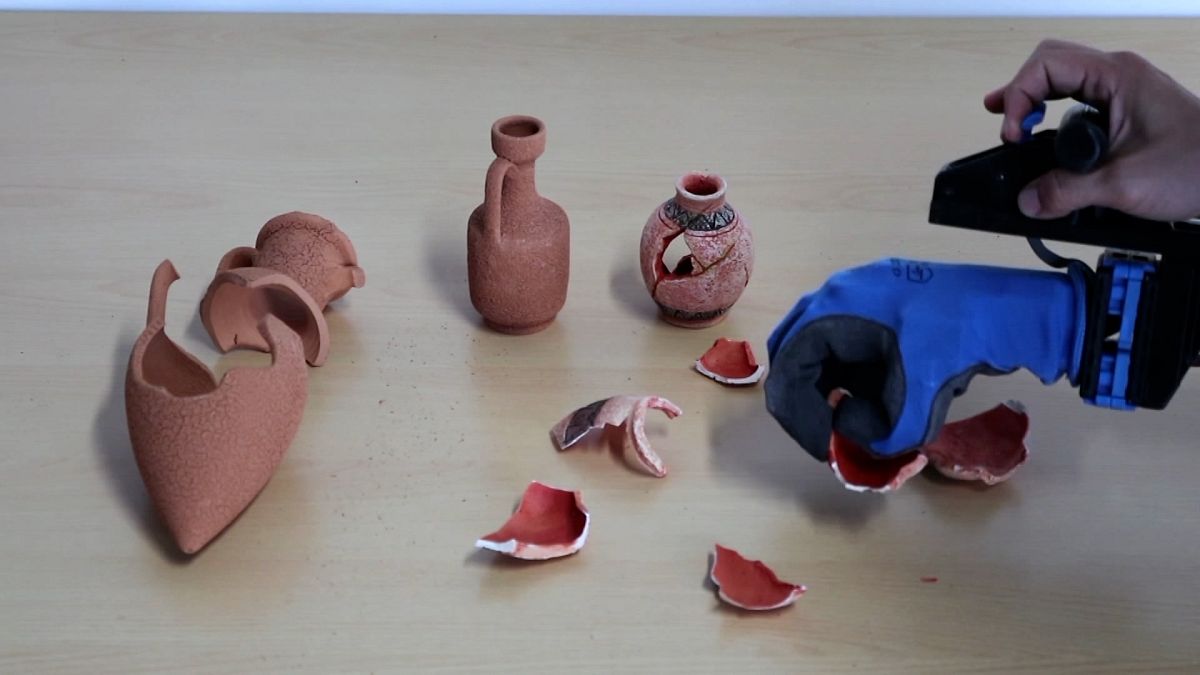A team of researchers in Italy are exploiting an intelligent robotic system to process, match and physically reconstruct frescoes and other shattered artefacts from Pompeii.
What if robots turned out to be the best at restoring ancient works of art to their former glory?
That’s the question that a team of Italian researchers in Mestre, just outside Venice, are putting to the test as part of the REPAIR project.
The team are taking broken frescoes and other artefacts from the ruins of Pompeii and are attempting to restore them using an intelligent robotic system.
The fragments being used in the experiment come from the frescoes of the Schola Armaturarum, destroyed by the collapse of the building in 2010.
The other frescoes were originally on the ceiling and walls of the House of Painters at Work in the Insula of the Casti Amanti which was damaged during the Pompeii eruption of 79 AD and then shattered by bombardment in World War II.
Using AI to rebuild very large frescoes
"One of the goals of this project is to deal with very large frescoes. I mean it's pointless for our system to deal with small frescoes," Marcello Pelillo, RePAIR project coordinator and professor of computer science at Ca' Foscari University of Venice, explained.
"If we have a fresco that is broken and contains just tens or maybe hundreds of pieces maybe we can solve it manually so we don't need a robot, we don't need artificial intelligence and stuff like that, so in this project we want to focus on very large frescoes, frescoes that no human team can actually solve, can actually reconstruct," he added.
As part of the experiment, the REPAIR project researchers will build a robot that uses hyperspectral technology to scan every fragment of the fresco and analyse its texture in three dimensions.
Hyperspectral imaging is a way to process information from across the electromagnetic spectrum beyond what the human eye can see. This information can be used to identify materials and processes.
"We will use hyperspectral technology to detect traces of pigments that are not visible anymore by human eyes, and these will be able, probably, to support our quest for the right piece matching the other piece," Arianna Travigle, co-ordinator for the IIT Centre for Cultural Heritage Technology, said.
According to Travigle, the biggest challenge for the project is the poor conservation state of the frescoes.
"There could be parts of the drawing that are over the fresco that is not visible easily," Travigle explained.
"So we will use this type of technology to investigate what could have been there before it was erased by the temperature, or the rain, or other factors that really change the structure of the pieces over time".
Organising fragments like a jigsaw
The plan is for thousands of fragments, like small pieces of a jigsaw puzzle, to be rearranged with the help of robotics.
The robot will be equipped with mechanical arms capable of scanning the fragments, recognising them through a 3D digitising system, and returning them to their correct place.
While the fragments are recognised and scanned, precision mechanical arms and hands will manipulate and move them with the help of sensors to prevent the slightest damage.
If it works, Travigle suggests that the process will unburden archeologists and conservationists of this time-consuming and finicky task so that they can focus on other aspects of their work.
"Piecing together an object that is destroyed like a fresco or any other archaeological object takes a really long time, it is really time-consuming, and there is not always the time to do that, it also doesn't increase the knowledge or the understanding of the expertise of the archaeologist or conservator – it is just putting pieces together," she said.
"The real work for the archeologist comes after that because it is about the drawing or what is depicted or the type of pigments that have been used, it is certainly not the piecing together part and it's the same for the conservators so it will take away all this wasted time spent into piecing together an object and will give more time to archeologist and conservators to do their real job".
The project began in September 2021 and is expected to take four years to complete.
For more on this story, watch the video in the media player above.



